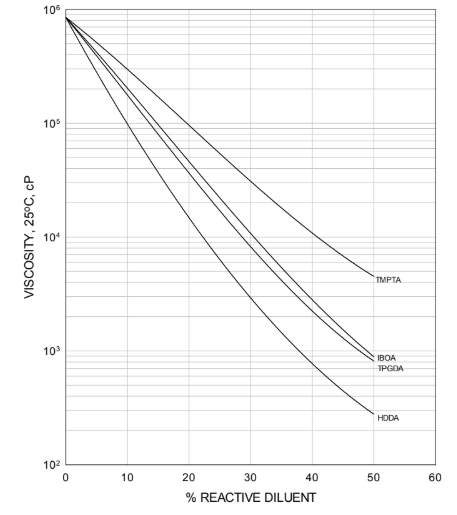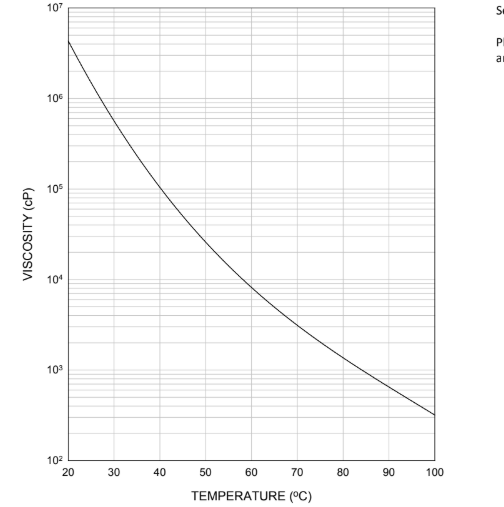Enhanced TDS
Identification & Functionality
- Blend
- No
- CASE Ingredients Functions
- Chemical Family
- Chemical Name
- Function
- Monomer
- Product Code
- MITM00390
- Single Ingredient
- Yes
- Synonyms
- Bisphenol A Diglycidyl Diacrylate Oligomer, Bisphenol A-Epichlorohydrin Acrylate
- Technologies
- Product Families
Features & Benefits
- CASE Ingredients Features
- Product Benefits
Good UV/EB cure response
Applications & Uses
- Adhesive & Sealant End Applications
- Application Method
- Coating End Applications
- Compatible Substrates & Surfaces
- Cure Method
- Ink & Toner End Applications
- Markets
- Applications
- Product Applications
- Clear coatings for paper, wood, and rigid plastic
- Adhesives for paper and film lamination
- Lithographic, screen and flexographic ink vehicles
Properties
- Physical Form
- Product Properties
- Greater flexibility and impact resistance than standard bisphenol A epoxy acrylates
- Superior chemical resistance
- Good abrasion resistance
- High gloss
Technical Details & Test Data
- Technical Data

Graph I shows the viscosity reduction of EBECRYL® 3701 with 1,6-hexanediol diacrylate (hdda), isobornyl acrylate (iboa), trimethylolpropane triacrylate (tmpta), and tripropylene glycol diacrylate (tpgda). Although viscosity reduction can be achieved with non-reactive solvents, reactive diluents are preferred because they are essentially 100 percent converted during uv/eb exposure to form a part of the coating or ink, thus avoiding solvent emissions. The specific reactive diluents used will influence performance properties such as hardness and flexibility.
EBECRYL® 3701 - Viscosity vs. Temperature

Packaging & Availability
Principal Information
- Group Principal Number
- S000001
- Principal
Storage & Handling
- Storage Conditions
- Care should be taken not to expose the product to high temperature conditions, direct sunlight, ignition sources, oxidizing agents, alkalis or acids.
- This might cause uncontrollable polymerization of the product with the generation of heat.
- Storage and handling should be in stainless steel, amber glass, amber polyethylene or baked phenolic lined containers.
- Procedures that remove or displace oxygen from the material should be avoided.
- Do not store this material under an oxygen free atmosphere.
- Dry air is recommended to displace material removed from the container.
- Wash thoroughly after handling.
- Keep container tightly closed.
- Use with adequate ventilation.
Other
- Appearance
- Clear liquid
- Appearance (SDS)
- Liquid
- Color (SDS)
- Clear to hazy light yellow pinkish to
- Item Number
- Odor (SDS)
- Acrylate
- Other Hazards
- Polymerization may occur from excessive heat, contamination or exposure to direct sunlight .
- Protect from Freezing
- Yes
- Temperature Control
- Yes
- USA/DOT UN Number
- Not Applicable
- Chemical Properties
Value Units Test Method / Conditions Acid Value max. 5.0 mg KOH/g mg KOH/g Epoxy Group Content max. 0.43 % % - Mechanical Properties
Value Units Test Method / Conditions Elongation 7.0 - at break, UV cured 125 μ thick films Tensile Strength 11400.0 psi psi at break, UV cured 125 μ thick films - Optical Properties
Value Units Test Method / Conditions Color Scale max. 6.0 Gardner Gardner Gardner Color Scale - Physical Properties
Value Units Test Method / Conditions Density 1.19 g/mL g/mL At 25°C Glass Transition Temperature (Tg) 52.0 °C °C Dynamic Mechanical Analysis (DMA) at break, UV cured 125 μ thick films Storage Temperature 39.0-104.0 °F °F Viscosity 3300.0-5000.0 - at 65.5°C - SDS Physical and Chemical Properties
Value Units Test Method / Conditions Boiling Point (SDS) min. 100.0 °C °C Density (SDS) 1.14 g/cm³ g/cm³ Partition coefficient n-octanol/water (SDS) 3.57 - n-octanol/water Vapor Pressure (SDS) 0.01 - at 20°C Viscosity (SDS) 3000.0-5000.0 - at 65.5°C Volatile Content (SDS) max. 0.5 % % - Shelf Life & Stability
Value Units Test Method / Conditions Shelf Life 730.0 -
